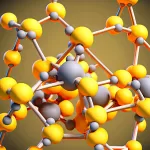
There is an opinion that you need to have enormous strength to take on building muscle mass. But is it? Let’s figure out what athletes can and cannot eat, how and when they should train, and how a beginner can avoid making mistakes in this matter.
The Multifaceted Benefits of Building Muscle
Revolutionizing Daily Activities
Building muscle transforms how you interact with the world. Suddenly, activities that once felt cumbersome, from lifting heavy objects to long walks, become more manageable and enjoyable. This isn’t just about raw strength; it’s about enhancing your daily life in a way that brings a sense of accomplishment and independence.
Calories Burned in Silence
Even when you’re not actively exercising, muscles continue to burn calories at a higher rate than fat. This heightened metabolic rate means that your body becomes more efficient at energy use, even during periods of rest, subtly contributing to weight management and overall health without any conscious effort.
Changing your body shape
As your body undergoes a transformation that is both noticeable and empowering. It’s not just about muscle definition; it’s about how those changes make you feel. Each new curve and contour of your muscles can bring a new sense of confidence and a deeper connection to your physical self, creating a body that not only looks different, but feels different too.
Bone Health
While the visual appeal of building muscle is obvious, there are also invisible benefits deep within your bones. The process of building muscle inadvertently improves your bones, increasing their density and reducing the risk of osteoporosis and fractures. This aspect becomes especially important as you age, providing protection to your skeletal system.
Harmonizing Body Movements
As your muscles become stronger, you will notice unexpected grace and fluidity in your movements. It’s not just about looking good; it’s about newfound coordination and balance that permeates every action, from walking to dancing. A stronger body promotes a more harmonious physical existence, where every movement becomes more fluid and controlled.
Cultivating Mental Resilience
On the surface, muscle building is a physical endeavor. However, it also harbors deep mental benefits. Discipline, focus and determination create resilience and mental clarity that extends beyond the walls of the gym. This fortitude often translates into other areas of life, enhancing a sense of control and resilience that can profoundly change a life.
A Bulwark Against Modern Lifestyle Diseases
In our sedentary world, building muscle mass is a defense against lifestyle-related diseases. It’s not just a fitness activity; it is an active step towards preventing diseases such as type 2 diabetes, heart disease and some types of cancer. When you exercise regularly, you don’t just train your body; You are actively involved in disease prevention and long-term health promotion.
Understanding Muscle Growth in Everyday Terms
Exercise: The Spark for Muscle Change
Think of your muscles as a sponge. When you exercise, it’s like squeezing that sponge – it challenges and changes them. This ‘squeeze’ creates small changes in the muscle fibers, which is actually a good thing because it’s the start of muscle growth.
Body’s Natural Repair Mechanism
After training, your body begins to repair these changes in your muscles. It uses the proteins that come from the food you eat, making your muscles better and stronger than before.
Hormones
Hormones in your body, like little messengers, play a big part too. They help speed up the repair and strengthening process, making sure your muscles get the most out of your workouts.
The Magic of Rest
Rest is when the real magic happens. It’s like giving your muscles a well-deserved break, allowing your body to focus on the repair and growth work. Without enough rest, your muscles don’t get the chance to fully recover and grow.
Nutrition: The Muscle Fuel
Just like a car needs the right fuel to run, your muscles need the right food to grow. Protein-rich foods act as the building blocks for muscle repair, while carbs and fats keep you energized for your workouts and daily activities.
Create your individual plan for gaining muscle mass
- Personal Fitness Mapping: Evaluate your body’s current state – how much muscle you have, your body fat percentage, and your overall physical health. This step is crucial to design a plan that’s not just effective but also safe, considering any specific needs or limitations you might have.
- Goal Crafting: Your muscle-building journey should have clear destinations. Set goals that are tailored to your aspirations – whether it’s bulking up significantly or achieving a more toned physique. Remember, these goals should be realistic and adjustable as you progress.
- Workout Regimen Design:Create a workout schedule that suits your goals. This includes choosing the right combination of exercises—think about a mix of compound movements and specific muscle workouts. The main thing is to start at a pace that is comfortable for you, without overloading your muscles, and then gradually increase the regimen.
- Nutritional Strategy: Achieving muscle growth isn’t just about exercise; it’s equally about what you feed your body. Create a nutrition plan that’s rich in proteins, balanced with carbs and fats, and tailored to your body’s energy needs. Hydration also plays an important role.
- Rest and Recovery Protocol: Building muscle isn’t a continuous grind; it’s a cycle of stress and recovery. Ensure your plan includes adequate rest – both in terms of sleep and designated non-training days. This downtime is when your muscles repair and grow.
- Progress Evaluation and Adjustment: Track your progress meticulously. This isn’t just about celebrating gains but also about identifying areas needing adjustment. Your program should be flexible to evolve based on your body’s response and growth.
Тhe way to strengthen muscles through nutrition
- Protein: Think of protein as the star of your muscle story. It’s not just about chicken or fish; consider a variety of proteins such as lentils, tofu and Greek yogurt. Aim for 1.2–2.2 grams per kilogram of your weight, and allow each protein source to enrich your body.
- Carbohydrates: Carbohydrates are the alchemists of your energy universe. Seek them in the fields of oats, the orchards of apples, and the roots of sweet potatoes. They’re not merely energy; they’re the catalysts that transform your workouts into strength and recovery.
- Fats: Fats create harmony in your body. Walnuts, coconut oil and avocados should make up about 20-35% of your caloric intake, which support muscle growth and well-being.
- Hydration: Water is a vital rhythm in the process of building muscle mass. This is a component that pulsates in each fiber, providing an influx of nutrients as well as muscle recovery and growth.
- Meal planning: Each nutrient has a different effect on muscles after exercise. Eat a balanced, nutrient-rich diet throughout the day to support your body’s progress.
- Additives: Supplements are not the main components of your diet, but can speed up your progress with whey protein, plant-based formulas and creatine. Remember, they complement your diet, not replace it.
Muscle growth through training
Building muscle mass is not only about lifting weights, but also about understanding the rhythm of your own body. The art is to challenge your body by gradually increasing the demands you place on it. This doesn’t just mean weight gain; it’s about the subtlety of varying reps, experimenting with set variations, and integrating new exercises.
Executing each movement with precision and care is more effective than hastily chasing numbers. This practice not only guards against injuries but also ensures that each muscle fiber is engaged deliberately, fostering more efficient growth. Using a variety of exercises ensures the harmonious development and balance of every part of the body.
Through signs of fatigue and soreness, muscles communicate their need for rest. By taking these cues into account and providing adequate rest days coupled with deep, restorative sleep, real growth occurs.
Remember that building muscle is your path to an improved, toned body, not a race. Avoid the comparison trap. Each body is unique in its response to training, so let your progress be the only important guide. Patience and consistency are your allies on this journey of gradual but profound transformation.
Navigating and Refining Your Muscle Building Path
As you delve into the world of muscle building, think of it as your unique journey, constantly evolving and adapting. Not only do you need to follow a set daily routine, but you also need to tune into your body’s reactions and shape your routine accordingly. The process is less about strictly following rules and more about learning and growing as you go.
Charting Your Progress: More Than Numbers
Keeping track of your progress is essential, but it goes beyond just numbers and measurements. Pay attention to how your body feels, the level of energy you have, and how your muscles respond post-workout. These indicators can often give you more insight into your progress than the scale or tape measure.
Adapting Your Regimen: A Responsive Approach
Adapting your workout plan is an exercise in responsiveness. If you find certain exercises too easy or too hard, it’s a signal to adjust the intensity, variety, or frequency. The same goes for your diet – if you’re not seeing the results you expect, consider tweaking your nutritional intake to better fuel your body for muscle growth.
Staying Agile in Your Fitness Journey
Your muscle-building path is dynamic, requiring you to be agile and open to change. Fitness is not a one-size-fits-all; what works for one person may not work for you. Stay flexible and be prepared to alter your course as you gather more understanding of your body’s needs and capabilities.
Conclusion
Stepping into the world of muscle building is like starting a new chapter in your personal health story. It’s more than just picking up weights; it’s about establishing a routine that becomes a part of your life, learning exercises as if they were new skills, fueling your body with the right kinds of nourishment, and allowing yourself time to rest and rejuvenate.
FAQs
If you’re a beginner, plan to train 3-4 times a week. This balance helps your body grow gradually without overloading it.
Protein helps repair and build muscle, especially after a workout. It is like the raw material the body needs to become stronger.
Yes, definitely. Bodyweight exercises like crunches and squats can be great for building muscle, especially for starters.
Everyone’s different, but generally, you might begin to notice muscle growth after about 4 to 8 weeks of regular training and proper nutrition.







